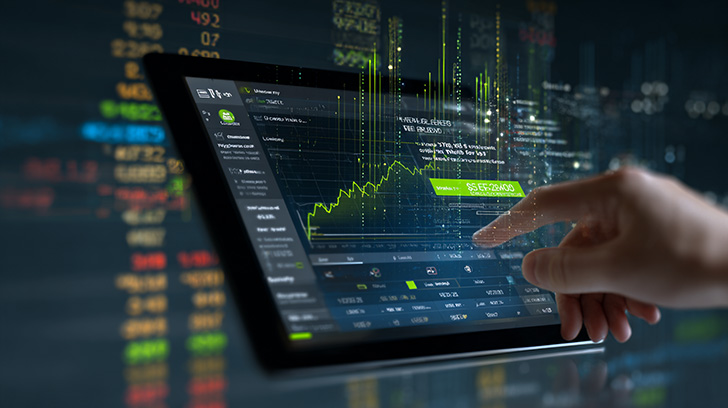
Data Quality: The Non-Negotiable Foundation for AI
Before you can run, you must walk. The biggest misconception in the industry is that you can simply “plug in” AI and get instant magic. The reality is that AI is only as good as the data it is fed.
The “Garbage In, Garbage Out” Risk. According to the h2c study, “Data quality and integration” are core prerequisites that many hotels overlook. In fact, 32% of hotels specifically struggle with cross-departmental data sharing, creating “data silos” that blind AI tools to the full picture.
If your data is fragmented—with one set of numbers in the PMS, another in the RMS, and a third in Excel—your AI will produce hallucinations, not insights. High-quality, clean data is the fuel that powers the AI engine.
What is Hotel Business Intelligence? (The 5 Essentials)
True Hotel BI is not just a generic reporting tool; it is a specialized engine designed to overcome these specific data barriers. To truly drive performance, a system must deliver these five essentials:
1. Automated, Multi-Source Data Integration
- The Challenge: 45% of hoteliers cite “integration challenges” as a top barrier to success.
- The Solution: A robust BI tool acts as a Data Warehouse, automatically pulling, cleaning, and standardizing data from your PMS, benchmarking tools, and budget spreadsheets into one trusted stream.
2. Interactive Dashboards & Visualizations
- The Challenge: 62% of chains cite “lack of expertise” as their biggest hurdle.
- The Solution: You cannot wait for data scientists. BI must be visual and intuitive, empowering the Front Office Manager or Sales Director to answer their own questions instantly without needing technical training.
3. Forward-Looking Pace & Pickup Analysis
- The Challenge: Reacting to the past instead of shaping the future.
- The Solution: Don’t just look at last month’s occupancy. Pace analysis shows how quickly you are filling up for future dates compared to the previous year, so you can adjust your pricing strategy before it’s too late.
4. Portfolio-Level Roll-Up & Benchmarking
- The Challenge: Fragmented performance views across properties.
- The Solution: For hotel groups, this creates a “single source of truth,” allowing executives to spot high-performers and struggling properties instantly. This addresses the 41% of hotels that currently face barriers to effective data usage.
5. Hotel-Specific KPIs & Terminology
- The Challenge: Generic tools (like Power BI) require weeks of customization.
- The Solution: Hotel BI speaks your language—RevPAR, ADR, and NetRevPAR—right out of the box, delivering immediate value.
Spotlight on Precision: What is Unique with Demand Calendar?
While many tools report the news, Demand Calendar helps you make the news. It distinguishes itself by acting as both your Data Warehouse and your AI Analyst.
1. The High-Quality Data Warehouse
Demand Calendar doesn’t just display data; it fixes it. It ingests data from multiple siloed sources (PMS, RMS, POS, Benchmarking), verifies it, and structures it into a high-quality Data Warehouse. This ensures that the AI algorithms are constantly working with accurate, verified numbers—eliminating the data quality risks that plague 32% of the industry.
2. Built-in AI Analysis
Once the data is verified, Demand Calendar leverages built-in AI to shift from passive reporting to active guidance—a critical evolution given that 44% of hotels are now planning AI-driven forecasting to stay competitive. Instead of forcing your team to hunt for trends, the system acts as a curator, analyzing complex forecast patterns and flagging predictive anomalies to reveal the clear signal within the noise. By filtering out distractions, the AI tells the coherent story of your property’s future performance, instantly directing your team’s attention to the most critical, actionable insights needed to protect margins and increase profits.
3. Interactive Budgeting, Forecasting, and Commentary
Demand Calendar is an interactive, “read-write” platform. Most BI tools are “read-only”—you look at the data, then open a separate spreadsheet to make your plan. Demand Calendar allows you to forecast, budget, and add context/commentary directly within the platform. This ensures your strategy lives right next to your data.
4. Trustworthy Bottom-Up Intelligence
User-friendly design makes Demand Calendar a multi-user system. It is designed for the entire commercial team, not just a back-office analyst. By enabling input from the bottom up (e.g., Sales Managers inputting group expectations), the data becomes more granular, accurate, and trustworthy.
5. Total Profitability Analysis
Revenue is vanity; profit is sanity. Demand Calendar focuses on NetRevPAR, Total Guest Spending, and Net Profitability. It tracks the specific acquisition costs (commissions, channel fees), giving you a clear picture of which bookings actually contribute to the bottom line.
Future-Proofing: The 2030 Outlook
Investing in BI is not just about today’s problems. The h2c study predicts that by 2030, functions like revenue management and guest data management will be largely automated.
Hotels that adopt BI today are building the necessary infrastructure for this future.
By ensuring data quality now, you empower every role to succeed:
- The General Manager gains a holistic view of the property’s health.
- The Revenue Manager shifts focus from simple rate management to Total Profitability.
- The Commercial Team collaborates in real time, breaking down the silos that 29% of hotels say still hold them back.
In a market where only 6% of hotel chains currently have a comprehensive AI strategy, adopting a platform like Demand Calendar, which prioritizes data quality, allows you to lead the pack rather than follow.




